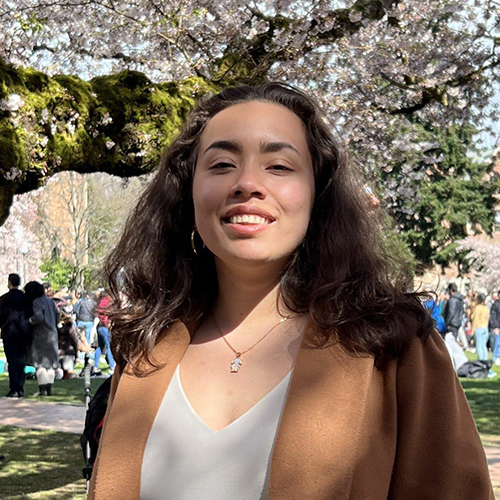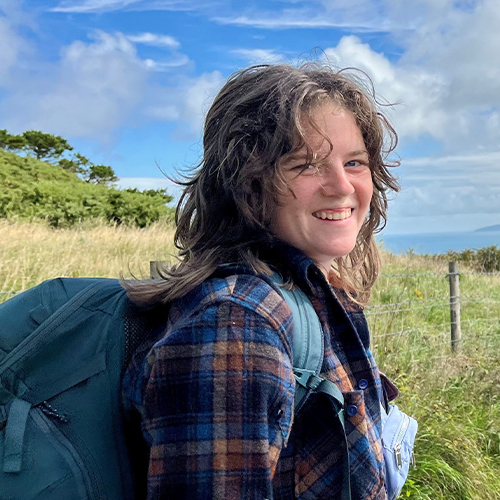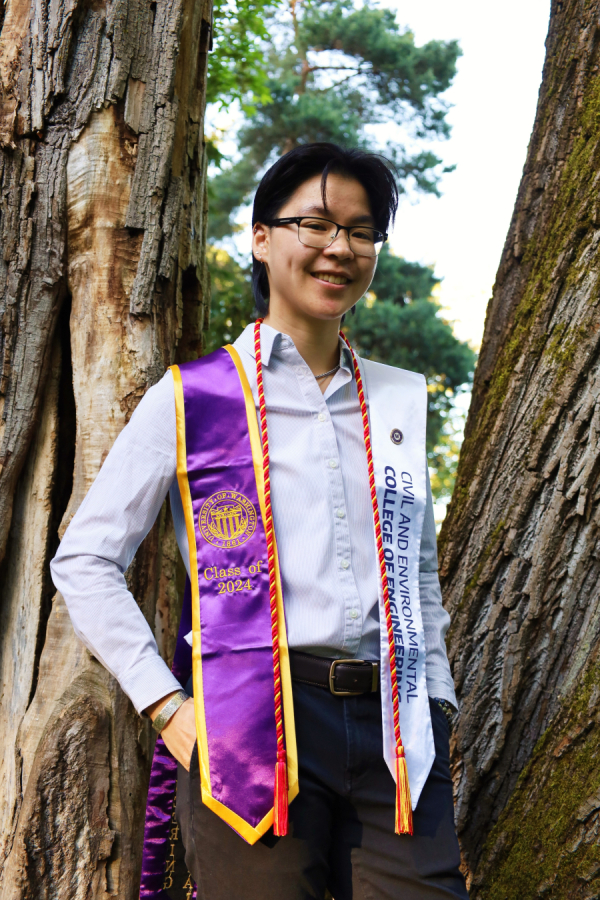By Julia Davis
With diverse backgrounds and experiences, CEE’s transfer students show that there is more than one path to success at the UW.
For many aspiring engineers, the journey to the UW starts not in bustling university lecture halls but in smaller community college classrooms. In fact, one in four CEE undergraduate students has transferred to the UW. While some come from other four-year institutions, the vast majority enter the department from community colleges. Along the way, these students gain unique skills and perspectives that enrich both their education and the department as a whole.
Overcoming uncertainty
For many transfer students, the biggest hurdle is wondering whether they’re prepared for the academic rigor of the College of Engineering. For Nicky Tejada, who transferred from Everett Community College in autumn of 2023, the challenge was daunting.

Nicky Tejada, a current CEE student who transferred from Everett Community College in 2023, says community college gave her the time and space to prepare for the UW’s academic demands
“Even after getting accepted, I worried if I could handle the workload,” Tejada recalls. “But community college gave me the time and space to figure it out.”
This sentiment resonates with other transfer students. Anthony Brim, who transferred from Whatcom Community College last year, remembers the nerves before starting his first UW classes.
"I was nervous that classes were going to be super hard here and that I would be struggling a lot," he says. "But I realized pretty quickly that community college prepared me a lot better for my junior year than I realized. If I had known that before, it would have saved me a lot of worry."
Ingrid Phillips (BSCE ’23), who transferred into the department from Everett Community College, says her community college experience sharpened her academic skills and taught her time management.
"Getting used to the pace of a quarter system at a community college was really helpful for making the transition to the UW," she explains. "Community college challenged me because I had to create a study schedule and stick to it, and that discipline really paid off."
Building connections

Ingrid Phillips (BSCE ’23) transferred from Everett Community College and credits her community college experience with sharpening her academic skills and easing her transition to the UW.
Beyond academics, finding their place in a much larger environment is another challenge transfer students face. For Phillips, adjusting to the UW's size was intimidating at first.
“The thing I was most worried about was finding my place and meeting other people I could relate to,” she recalls. “At first, it felt overwhelming. But the way the civil engineering program was structured helped me feel more connected."
She credits CEE’s track layout, which places students in core classes with the same group for the entire junior year — when most transfer students enter the program — as a key factor in helping her build relationships.
“Seeing the same faces every day made it easier to form study groups and make friends. It made UW feel smaller and more familiar,” she says.
Brim found a similar sense of connection within his cohort.
"Having friendships with the people in my cohort made my junior year way more fun than it would have been if I didn’t meet anybody and went in alone," he says.

Anthony Brim, a current CEE student who transferred from Whatcom Community College, says his community college experience gave him the preparation and confidence to excel at the UW.
For Casera Pinto (BSENVE ‘24), who transferred from Santa Rosa Junior College, the shift from community college to UW was also about building a new sense of community.
“Community college students have all kinds of different goals — some are working towards technical degrees, others towards associate degrees or transferring to four-year schools,” she explains. “Because of that, there wasn’t as strong of a community. At the UW, where almost everyone is trying to get a bachelor’s degree, it was easier to find common ground with people here.”
Outside the classroom, extracurricular activities play a major role in helping transfer students feel connected. Tejada joined the Steel Bridge Club and learned how to weld, something she had never done before.
“Joining a club helped me feel more connected and gave me the chance to develop new skills,” she says. “It was exciting to dive into something so hands-on, which is something I didn’t get to experience in community college.”
The benefits of starting at community college

After transferring from Santa Rosa Junior College, Casera Pinto (BSENVE ’24) found a strong sense of community at the UW while continuing to explore her academic passions.
While the transfer route comes with its own set of challenges, it also offers unique advantages. For many students, starting at community college provides flexibility, time to explore academic interests and significant financial savings.
"The reason I went the community college route was primarily because college is so expensive," says Pinto. "My family sat down and had a conversation with me about how they wanted me to try to go the community college route instead of going straight to a four-year university."
In addition to being more affordable, community colleges offer students time to decide on a career path.
"Going to community college gives you time to focus on what you really want to do without the pressure of a heavy course load or big university environment," says Tejada. "It allows you to take a breath and figure things out."
Phillips adds that smaller class sizes and closer connections with professors at her community college made her transition to the UW smoother.
"I had smaller classes and more access to professors at my community college, which made me more comfortable asking for help when I needed it at UW. Advocating for yourself is key, and my experience in community college helped me build that confidence,” she says.
For Tejada, starting at community college reshaped her expectations and showed her the value of adapting to change.
"Being a transfer student helps you see that there are different paths in life," Tejada says. "In high school, I thought I’d go straight to a four-year university, but plans don’t always work out the way you expect, and community college helped me realize that even though I may want a certain career path, it’s okay if it takes a different direction."
Navigating the transition
From dedicated advisers who ensure transfer students remain on track to student organizations that help build community, the UW offers a range of support systems that ease the transition and foster success.
"Be well acquainted with your academic advisers," says Pinto. "I met with mine every quarter to make sure I was on track."
Phillips agrees, noting that UW’s detailed course equivalency system made the transfer process smoother.
"One of the great things about transferring from a Washington state community college to the UW is that the path was pretty easily laid out," she says. "The course transfer equivalency was great, and I was able to knock out a lot of my required classes that way."
For these transfer students, starting at community college wasn’t just about saving money or easing into a new environment — it was about shaping their academic journey and future. The sense of community they’ve built, the adaptability they’ve gained and the skills they’ve honed have empowered them to thrive at the UW.
"The flexibility and support at community college helped me find my footing. It was exactly the preparation I needed to succeed."
While their paths may have been less conventional, their experiences exemplify resilience, resourcefulness and a commitment to education — qualities that continue to strengthen the CEE community.
Originally published October 24, 2024